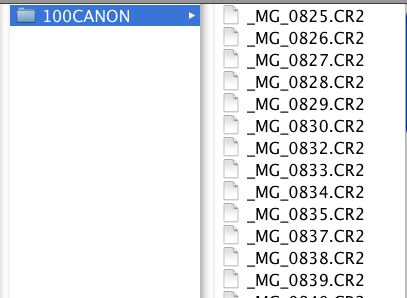Aperture and sRAW: What’s the Problem, Apple?
The Canon 50D digital camera includes three RAW formats, including the standard 15 (4752x3168) megapixel size, and two smaller sizes: the sRAW1 7 (3267 x 2178) megapixel and the sRAW2 3.8 (2376 x 1584) megapixel sizes. These RAW modes are also available, in larger sizes, in the Canon 5D MarkII.
Most serious and professional photographers will tell you that they shoot in RAW mode because it provides much more flexibility and control when working with image files in Photoshop, Aperture, Lightroom, or some other RAW processing application.
When I shoot weddings, I typically shoot in the full 15 megapixel RAW mode size, but occasionally I will also shoot in the sRAW1 size simply because I know that I, nor my clients, will not need the larger size for printing. The sRAW1 size can print up 8x10 photo size, while a 15 megapixel image can print up to a 16 x 10 photo.
The file size for a 15 megapixel image can be up to 20MB, while the sRAW1 megapixel files are around 12.6MB each, according to the Canon 50D manual. When shooting hundreds or thousands of photos at a time, these file sizes can take up a lot of hard drive space. So unless you want to constantly add external hard drives to your workflow, you probably will not want to always shoot at the full RAW mode with the Canon 50D. Also, shooting in full RAW size mode, you will most likely have to upgrade to larger CompactFlash media cards. 2gig CompactFlash cards will only hold about 80 full-size RAW images. I've had to upgrade to 4 and 8gig compact cards for professional jobs in order to shoot in the larger size RAW modes.
But shooting at the smaller sRAW1 size can be problematic if you're using Aperture 2.0 or iPhoto, because the programs don't support the sRAW modes. When you import sRAW files into Aperture, you will get a good preview of the photos in the importing window. So it appears that Aperture will handle the files okay. But when you actually import the files into the application and try to open them up for editing, this is what you get:

You will get this unsupported message <em>after</em> when you import the sRAW images, not before. All RAW files get the CR2 suffix as part of their file name, so there's no way to see which size RAW files you're about import into Aperture.
The only way to check the format of your Canon 50D RAW files is to view the files in the Finder. You have to view the files directly from the CompactFlash media cards when you connect them to your computer. When you view JPEG or standard RAW files that are supported in OS X Leopard, you will get a preview of those photos. You can actually use Quick Preview in Leopard to view these support files. But this is not so with sRAW files. They will appear like this:

You have to import these files into Adobe Camera RAW, Adobe Lightroom, or the Digital Photo Processing application that comes with the Canon camera, and then export them as JPEGs in order to view and further process them in Apple's Aperture or iPhoto.
While Apple released an update to the OS Digital Camera RAW Compatibility back in, I think, June, that update apparently did not include support for the sRAW files. Arggghhh! Why Apple has yet to provide support for sRAW files is totally beyond me. But I do know that this lack of support puts a dint in the post-processing workflow. I've read serveral complaints by photographers using the Canon 50D or 5D. Apple not including this support in their last RAW update is seriously an insult, especially since sRAW modes have been out for almost a year now.
If this is problem for you, I encourage you to go to Apple's feedback page and request that this problem be addressed. You will see a list of other Apple applications in which to also give feedback on.


Comments
With Aperture, everything I need is all on the same screen; there’s no need to twiddle with panels, menus or layers as I’m trying to work. -Tire Works